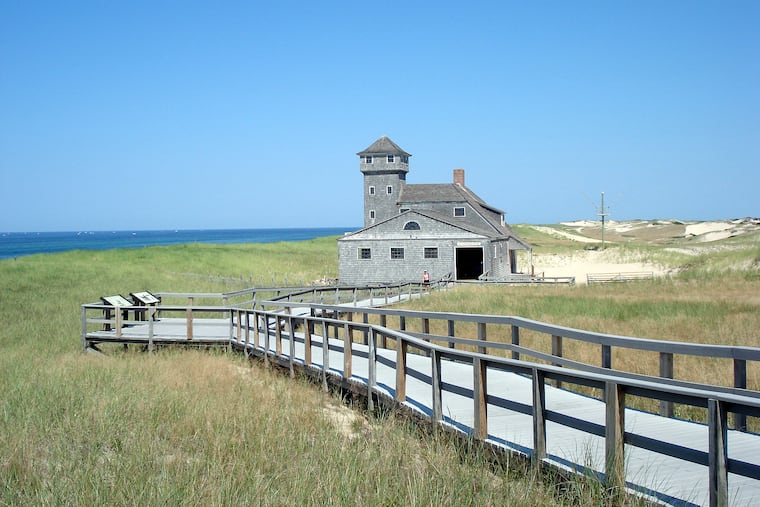Try a different Massachusetts cape: Ann
For New Englanders, going "down the cape" means visiting Cape Cod. But if you want to avoid the mind-numbing traffic that you’ll find there but still desire sandy beaches, historic art colonies, and postcard-worthy landscapes, look at Cape Ann.

For New Englanders, going "down the cape" means visiting Cape Cod, that storied Massachusetts peninsula southeast of Boston jutting 65 miles into the Atlantic Ocean and curving upward through the sea like a flexing arm. There are nearly 560 miles of coastline and even a namesake cocktail.
But if you want to avoid the mind-numbing traffic you’ll find there and still desire sandy beaches, historic art colonies, and postcard-worthy landscapes, try Massachusetts’ “other cape”: Cape Ann.
Cape Cod. During the summer, this is a magnet for tourists who pack its soft-sanded beaches and Instagram-pretty municipalities, such as Provincetown (at the far tip of the cape and known for its art colony and LGBT culture), Falmouth (historic districts, beaches, and theater community), and Chatham (the fishing village of your dreams).
The region’s jewel is the Cape Cod National Seashore, a 43,000-plus-acre expanse of unspoiled woodland, marshes, dunes, and beaches, including Race Point Beach in Provincetown, which is regularly ranked among the best beaches in the world and which offers glimpses of whales offshore.
Ferries connect the cape to two other renowned vacation spots, the islands of Martha’s Vineyard and Nantucket, which are as popular with folks who use summer as a verb as with the rest of us.
For all of Cape Cod’s charms, though, New Englanders know going “down the cape” means booking exorbitantly priced accommodations while you’re still doing your holiday shopping and then enduring its notorious traffic. The peninsula is separated from the rest of Massachusetts by the narrow Cape Cod Canal, and miles-long logjams of vehicles trying to cross its two aging traffic bridges, the Bourne and the Sagamore, are well-known sights over the summer.
Cape Ann. Thirty miles northeast of Boston, it’s relatively easy to find budget-friendly summer lodging among the four towns, each with a distinctive flavor.
In marshy Essex, poke around Main Street, lined with antiques stores, and weigh in on the friendly clam-shack rivalry between J.T. Farnhams and Woodman’s of Essex.
Visit tony Manchester-by-the-Sea to check out the natural phenomenon of Singing Beach, where the sand squeaks underfoot.
In Gloucester, known as America’s oldest seaport, a busy working waterfront exists alongside luxury oceanfront homes, the Rocky Neck Art Colony, and the Cape Ann Museum.
Rockport, perched at the granite tip of Cape Ann, is home to an art-infused downtown, Rockport Music’s magnificent, seaside Shalin Liu Performance Center, and Motif No. 1, the celebrated red fishing shack known as the most painted building in the country.
There are standout beaches — Good Harbor and Wingaersheek beaches in Gloucester, Front Beach in Rockport, and Crane Beach in Ipswich, at the northern edge of Cape Ann proper, where the powdery soft sand and gentle waves along this four-mile stretch of pristine barrier beach (plus lifeguards, eco-friendly facilities, and services for the disabled) create a perfect spot for relaxing and playing, especially for families.
The beach is just part of the 2,100-acre Crane Estate, which includes the Crane Wildlife Refuge and the spectacular historic mansion and manicured gardens of Castle Hill, the early-20th-century summer home of plumbing magnate Richard T. Crane. (The mansion and gardens are open for tours and special events, such as the annual Roaring Twenties Lawn Party, held this year Aug. 3-4.)